What are the differences between all the different kinds of CBD oil?
So you have done your research and decided you want to give CBD oil a shot. Awesome! Did you know there are several variations of CBD oil? In case you were unsure of what those differences are, or weren’t even aware there were differences at all, this article will help guide you through all the variations in type, packaging and strengths. All of these differences can affect the CBD in the product and how the CBD reacts with your body, so naturally these are important details to understand when deciding which CBD oil is right for you.
There are the three main types of CBD oil that just about all CBD oil products fit into.
-Raw
-Decarboxylated
-Filtered (commonly the “gold” line)
These three types of CBD oil are common throughout the market of CBD hemp oil, and becoming clear on what each of them means can make for a better experience. Let's take a closer look at each of these three types of CBD oil in detail.
Raw
Raw CBD oil is, exactly as it sounds, raw. Raw CBD oil will not be processed any further than its original extraction and will contain other compounds in it such as microscopically small plant material, lipids (or fats), chlorophyll, and terpenes among other things as it has not been filtered. The color of this oil will usually be dark green to black and have a thick consistency. Raw will usually be the product of choice for people looking to benefit from the use of the entire hemp plant and not necessarily just cannabidiol. Raw CBD oil still has the ability to have multiple percentages of CBD.
Raw or unfiltered non-decarboxylated versions of CBD oil will always be the cheapest option as they have not been processed any further than the original extraction. Raw CBD oil typically contains a lower percentage of CBD (cannabidiol) by volume than the decarboxylated or filtered (Gold) versions.
Because raw CBD oil will need to be heated to be activated, it tends to be less user-friendly, and these days, most CBD customers are buying the decarboxylated and filtered varieties.
Decarboxylated
This type of CBD oil is similar to raw except it has been decarboxylated, meaning that the cannabinoids are already in their active state. The process of decarboxylation is seen as a way to up the strength or effectiveness of the CBD in the CBD oil and offers a faster reaction time for the CBD oil once it's in your body.
According to Wikipedia:
“Decarboxylation is a chemical reaction that removes a carboxyl group and releases carbon dioxide (CO2). Usually, decarboxylation refers to a reaction of carboxylic acids, removing a carbon atom from a carbon chain."
You can think of decarboxylated CBD oil as getting more bang per mg of CBD. Basically, decarboxylation will turn CBDa into CBD, which is a non-acid molecule that will better fit your endocannabinoid receptors and be more active within your body. Decarboxylation is commonly referred to as activated, which can leave the impression that CBD that has not been decarboxylated will not have benefits because it is not active, but this is not the case. It will simply be received less easily by your body than decarboxylated CBD. The decarboxylated form of CBD oil will typically be dark green to black with a thick consistency at room temperature.
Decarboxylated CBD oil is a mid-level priced CBD oil as it is processed more than raw oil but is not filtered like the gold oils.
Our Active CBD oil Green - 17% is one example of a full spectrum, decarboxylated CBD oil.
Filtered
Gold is commonly the title of choice by CBD oil manufacturers for their filtered “gold” colored CBD oil and usually represents their highest concentration CBD product. The filtered or “gold” varieties will typically be decarboxylated as well as being filtered to remove the smaller plant constituents such as chlorophyll, lipids and other non CBD plant parts.
Of course, with the gold version having the most filtering and highest concentration of CBD it also comes with the highest price tag but it still remains the most sought after and holds the highest market demand.
Our Active CBD oil Gold - 25% is one example of a broad spectrum, decarboxylated and filtered CBD oil.
Dosing and percentages vs mgs
A quick note about dosing and percentages. At DiscoverCBD.com, many of our customers will take a daily dose of 1/10 gram twice a day. However, this is not for everyone, and some manufacturers have it clearly stated on their packaging that they suggest a dose of 1 gram a day split into two .5 gram doses. This is all personal preference and it really depends on the individual as well as the reason they are taking it in the first place. Because there is no general guideline of “use X mg for this amount of individual’s weight” we always tell people that most of our customers will start low and work their way up to find the lowest effective dose for them.
We have also been asked on a number of occasions about how many mgs of CBD are in a particular syringe. In order to figure this out, you need to know that there are 1000 mgs in each gram and depending on the percentage you can then tell how many mgs of CBD are in the CBD oil syringe you are looking at. So for instance if you have a 1 gram syringe that is 15.9% CBD then you will have 159mg of CBD in that 1 gram syringe. If the syringe is 25% CBD by volume then it would have 250mg of CBD in the syringe.
Packaging
You will also encounter a few different types of packaging when purchasing CBD oil so we wanted to clarify the typical uses for these different packaging options. The first and by far the most common type of packaging is going to be the syringe but there are also small plastic small jars and silicone containers.
Syringe
The syringe is typically both the easiest to store and dispense CBD oil in. However, there can be a few drawbacks, although there are also some pretty good ways to minimize those drawbacks. While a syringe is awesome for accurate dispensing because it has the mg markings written right on the side of the syringe, it can also be tricky when the syringe is cold and the oil is thick. When the syringe is stored in someplace cold like a fridge, the CBD oil can get so thick it can be difficult to push out of the syringe, sometimes resulting in jumpy pushes, inaccurate dispensing, or even worse, a bruised thumb. A quick way to make sure the CBD oil dispenses easily is to warm up the syringe by placing it in some warm tap water or by wrapping the syringe in a wet towel and placed in the microwave to get warm. Once the syringe is warm, the CBD oil will dispense much more easily. Also, be aware that the gold varieties of oil typically don’t need to be warmed as much as the decarboxylated or raw versions, as they have already been filtered and are thinner to start with. Also, you will want to make sure not to warm up the syringe to much, or the cap will pop off from the expanding pressure inside and leak out.
Plastic Jar
Some companies make 1 gram increments of their raw CBD oils as well as their gold CBD oils in plastic jars. These plastic jars are more difficult to dose in exact increments, which makes these little jars the typical choice for people applying CBD oil topically, where someone will just be putting a small amount on their finger and rubbing it on their skin or something of that nature. There have also been instances where people preferred the small jars because they were tired of having to warm up their syringes before being able to get to the CBD oil inside and opening a jar was a more convenient option for them.
Silicone Jar
At one point, Pharma began using silicone nonstick containers to store their 25% gold CBD oil in specifically for dabbing. These jars can certainly be easy to open, but they sometimes will open in a pocket at an unforeseen moment. The other benefit is that these silicone jars do not stick very well to the CBD oil, so it is generally easy to get every last bit of CBD oil out of these silicone jars.
Conclusion
While we know it may be confusing at first to decide on the CBD oil you need, it can actually be quite simple once you know what all the differences are. We hope this article can help those of you who were either on the fence or just weren’t exactly sure about what everything meant to make a good decision that you are happy about.
If you have any more questions, no worries, we are here to help! You can reach us at DiscoverCBD.com through email at DiscoverCBD@gmail.com or at 719-358-7553 anytime with any questions you might have or to place an order if the online storefront isn’t what you are looking for.
Thank you for taking the time to read our blog! To get your very own Active CBD products, come into any one of our Discover CBD stores, on the web at discovercbd.com, facebook, or by simply calling us at, 719-358-7553 to place an order!

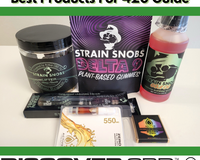
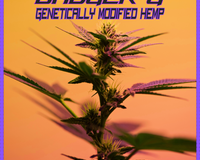

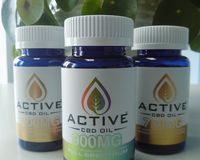
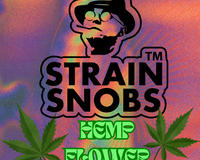

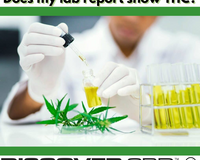
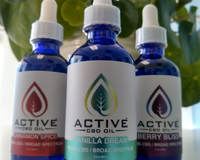

















2 comments
cbd isolate
The epileptic conditions that CBD is proving to be effective against are extremely complex, and not even the most powerful, well researched pharmaceuticals have been capable of inducing any healing. Yet high-CBD cannabis oil is immediately and potently reducing symptoms, with the only side effects being systemically beneficial – more energy, better learning, improved behavior, and more cbd isolate.
Amalio Gonzales
I have been taking DVD Oil along with Gabapentin for 2 months and has helped tremendously with my Neuropatia. Also seem to have helped some with making my legs feel Springer I have Inclusion Body Myositis i can now walk twice the distance i was walking and stay outside up to 3hours watering my trees and grass in yard.